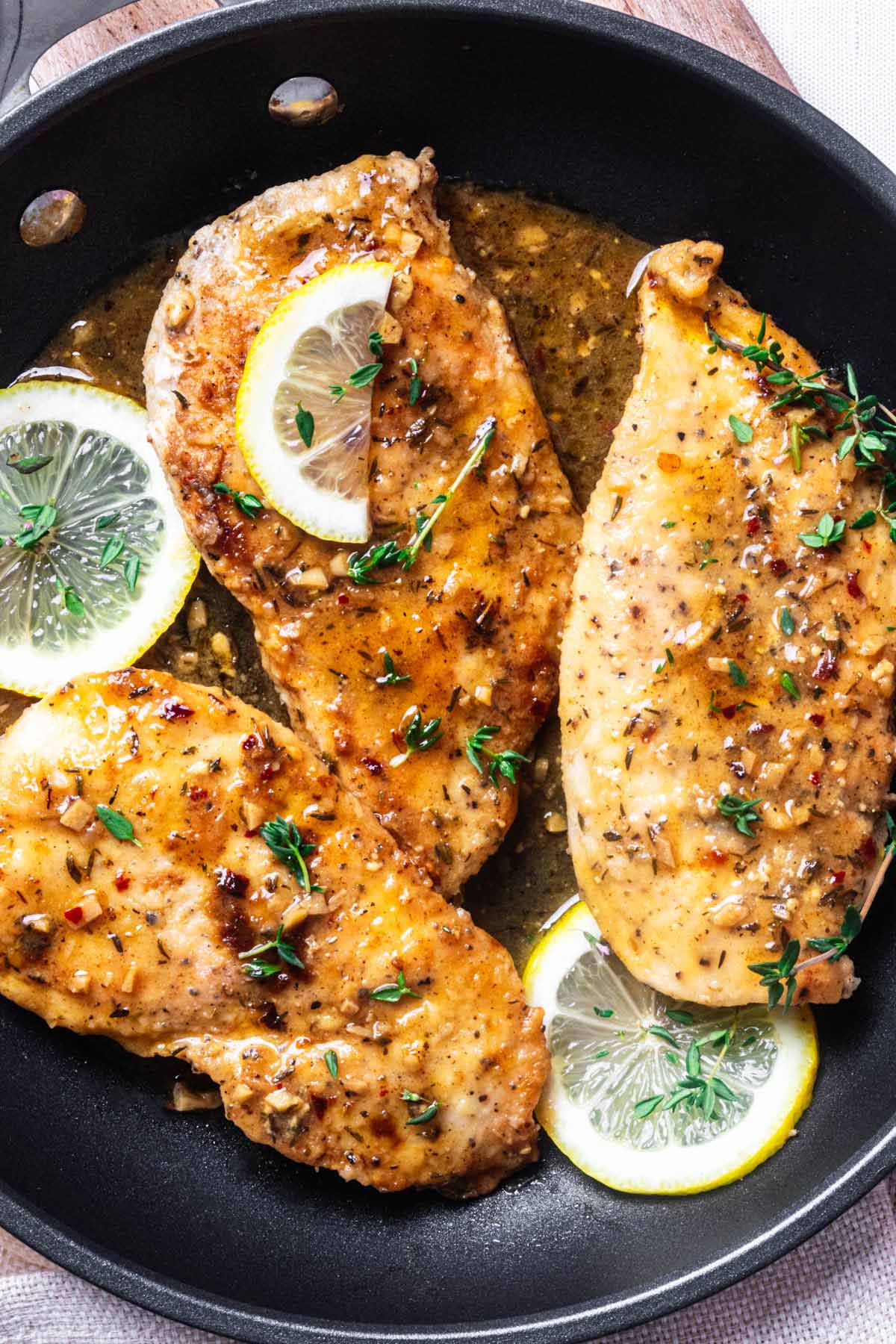
Looking for a dinner that's both impressive and doable? Enter our take on chicken limone! You've got succulent chicken, a lip-smacking lemony sauce with a hint of garlic and honey—all in just 30 minutes. Whether you're a cooking enthusiast or a busy weeknight warrior, this dish brings gourmet flair to your table without the fuss!
Chicken limone is a simple Italian dish similar to chicken piccata. Our version includes a few extra ingredients like honey, red pepper flakes, and Dijon mustard to bump up the flavor.
This is a quick and easy skillet recipe like our mushroom chicken and lemon pepper chicken thighs. Skillet recipes make the perfect weeknight dinner idea because they're quick and easy to prepare.
Table of Contents
Why You'll Love This Recipe
❤️ Quick and easy. This recipe is surprisingly easy to prepare, making it a perfect choice for busy weeknights when you want a gourmet meal without spending hours in the kitchen.
❤️ Family-friendly. The balanced flavors in this dish are generally pleasing to a wide range of palates, making it a family favorite that even picky eaters can enjoy.
❤️ Versatile. You can pair chicken limone with a variety of side dishes, such as pasta, rice, or vegetables, making it adaptable to your personal preferences and dietary needs.
❤️ Restaurant-quality at home. You can savor the flavors of a restaurant-quality dish without the expense of dining out, all from the comfort of your own kitchen.
❤️ Perfect for beginners. Making chicken limone can boost your cooking confidence, as it incorporates basic techniques like pan-searing and creating a simple pan sauce.
Ingredients
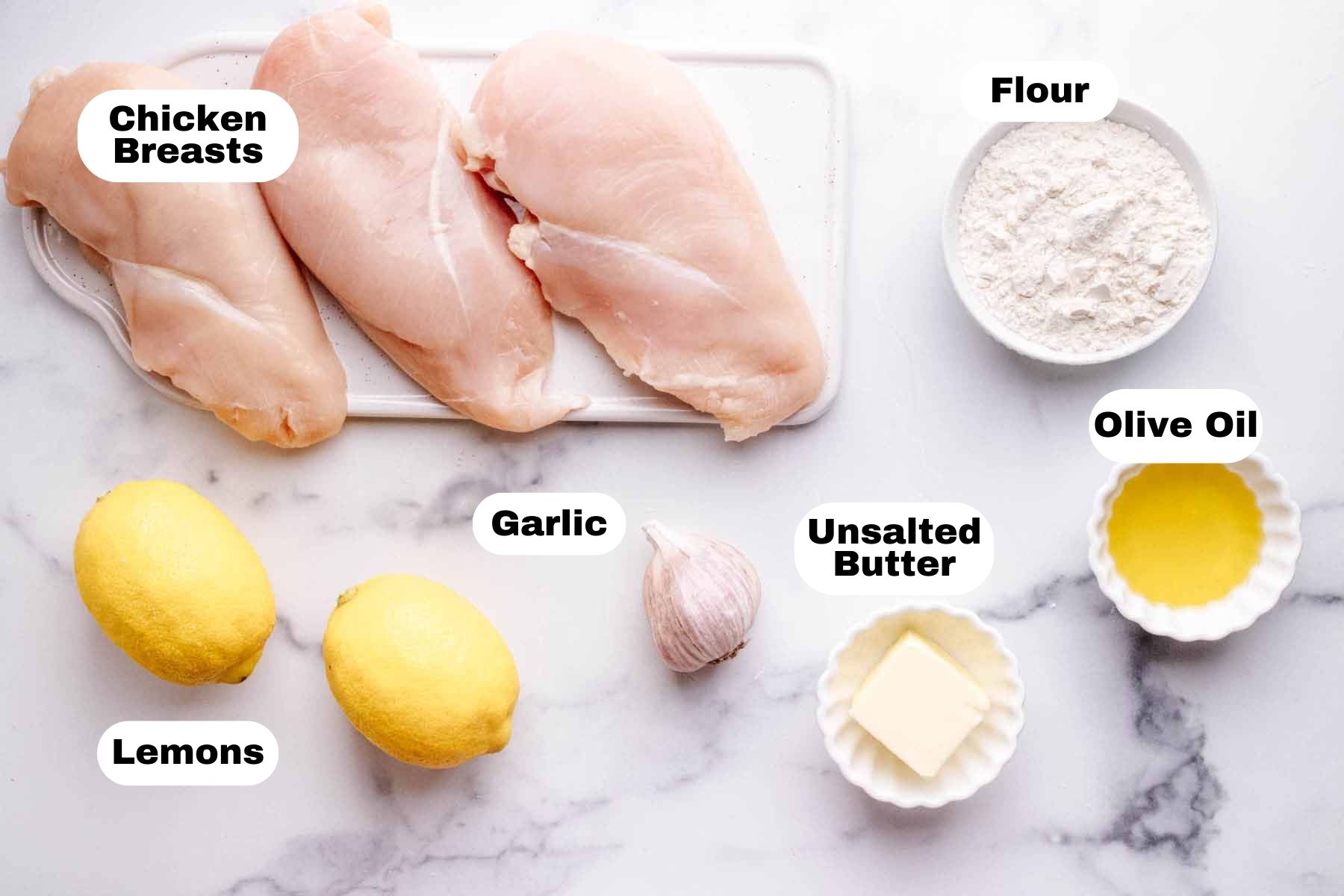
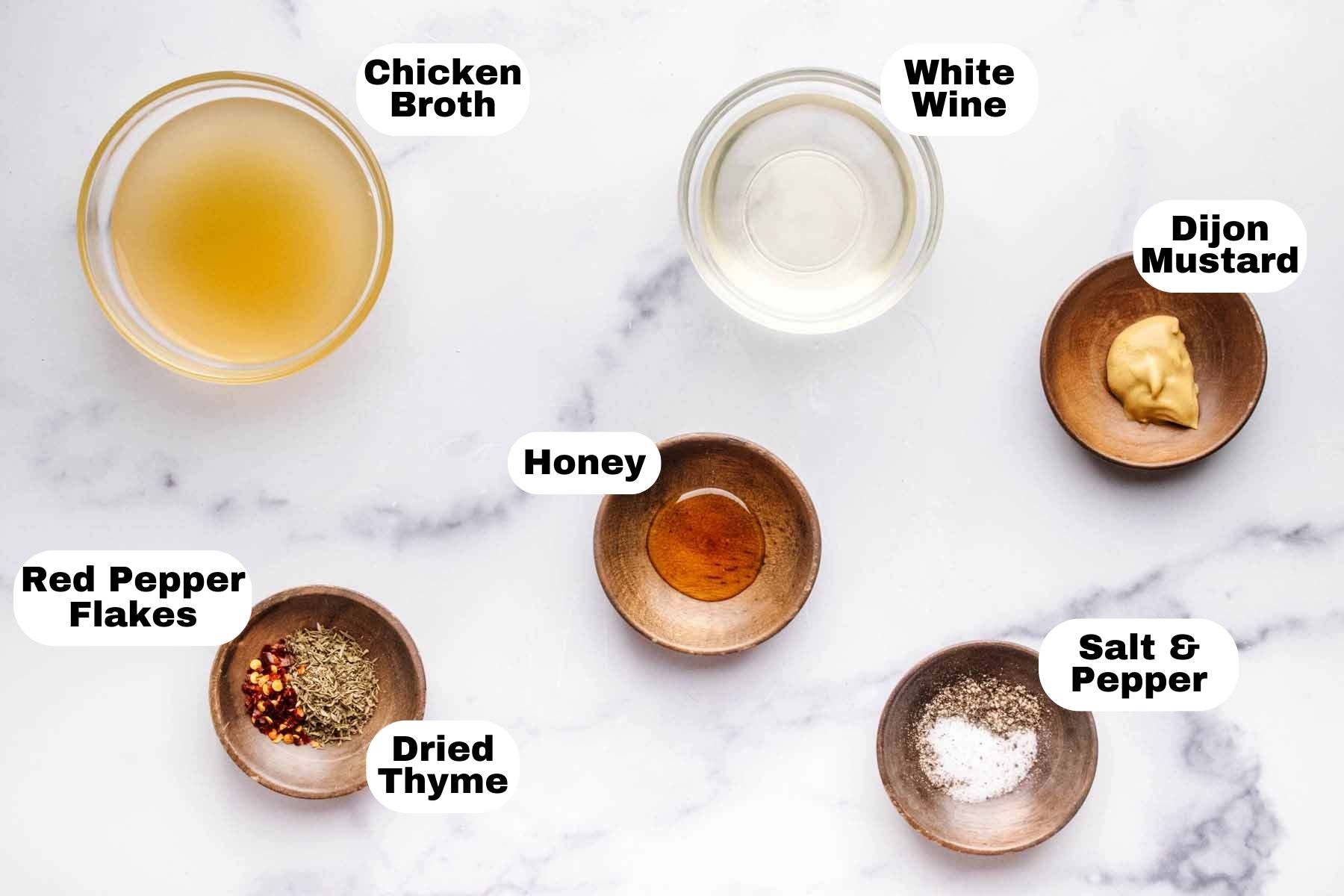
- Boneless, skinless chicken breasts: Opt for boneless, skinless chicken breasts for a leaner option. Cut them in half lengthwise. If they do not have an even thickness, pound them to an even thickness to make sure they cook uniformly.
- Salt and freshly ground black pepper. Use kosher salt or sea salt for seasoning, as they adhere well to the chicken. Regular table salt is fine also. Freshly ground black pepper adds more flavor compared to pre-ground pepper.
- All-purpose flour. The flour creates a light coating on the chicken, helping to achieve a golden-brown crust when seared. Shake off excess flour to prevent a thick, gummy coating.
- Garlic. Freshly minced garlic delivers a full and aromatic garlic flavor. Be cautious not to burn the garlic during sautéing, as it can become bitter.
- Red pepper flakes. Red pepper flakes provide a hint of heat and can be adjusted to taste.
- Butter and olive oil. Butter adds richness and flavor, while olive oil prevents the butter from burning at high heat. Together, they create a luscious base for the lemony sauce.
- Lemon juice. Freshly squeezed lemon juice provides the brightest and most authentic flavor. Strain the juice to remove seeds and pulp for a smoother sauce.
- Chicken broth. Use low-sodium chicken broth to control the saltiness of the dish. Homemade chicken broth or a high-quality store-bought version can enhance the overall taste.
- Salted white cooking wine. We used salted white cooking wine for this recipe. You can also choose a white wine that you enjoy drinking, as its flavor will infuse the sauce. Options like Sauvignon Blanc, Pinot Grigio, or Chardonnay work well. You may need to increase the amount of salt you add if you're not using salted cooking wine..
- Dijon mustard. Dijon mustard adds a subtle tang and depth to the sauce. Use a good-quality Dijon for the best results.
- Honey. Honey balances the acidity of the lemon juice and adds a touch of sweetness. Adjust the amount to suit your taste preferences.
- Dried thyme. Dried thyme complements the flavors in the sauce but can be substituted with fresh thyme leaves.
- Fresh thyme. Fresh thyme leaves add a burst of color and a fresh, herbaceous flavor as a garnish.
- Lemon slices (for garnish, optional). Thin lemon slices make a visually appealing garnish and can enhance the citrusy aroma of the dish.
Instructions
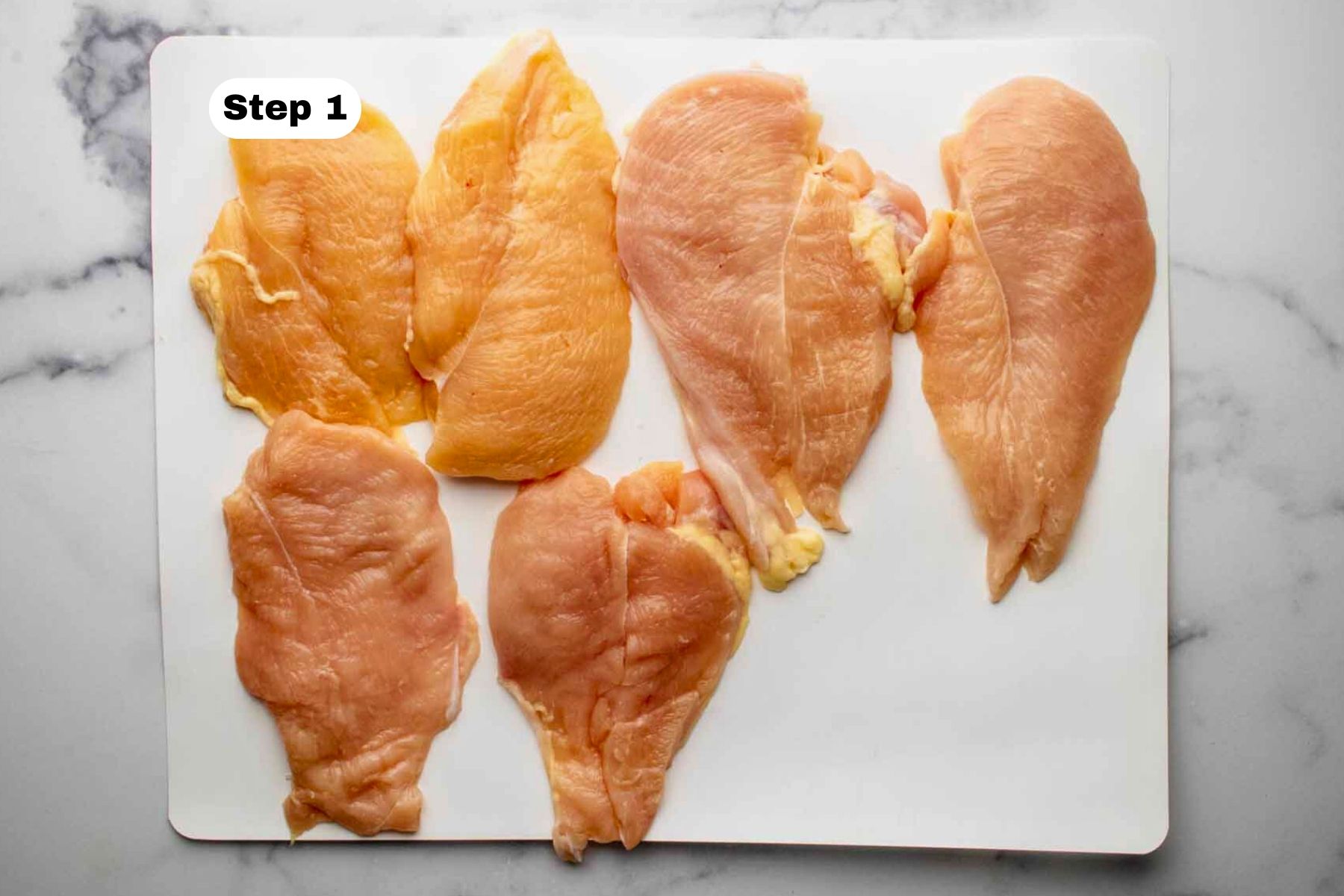
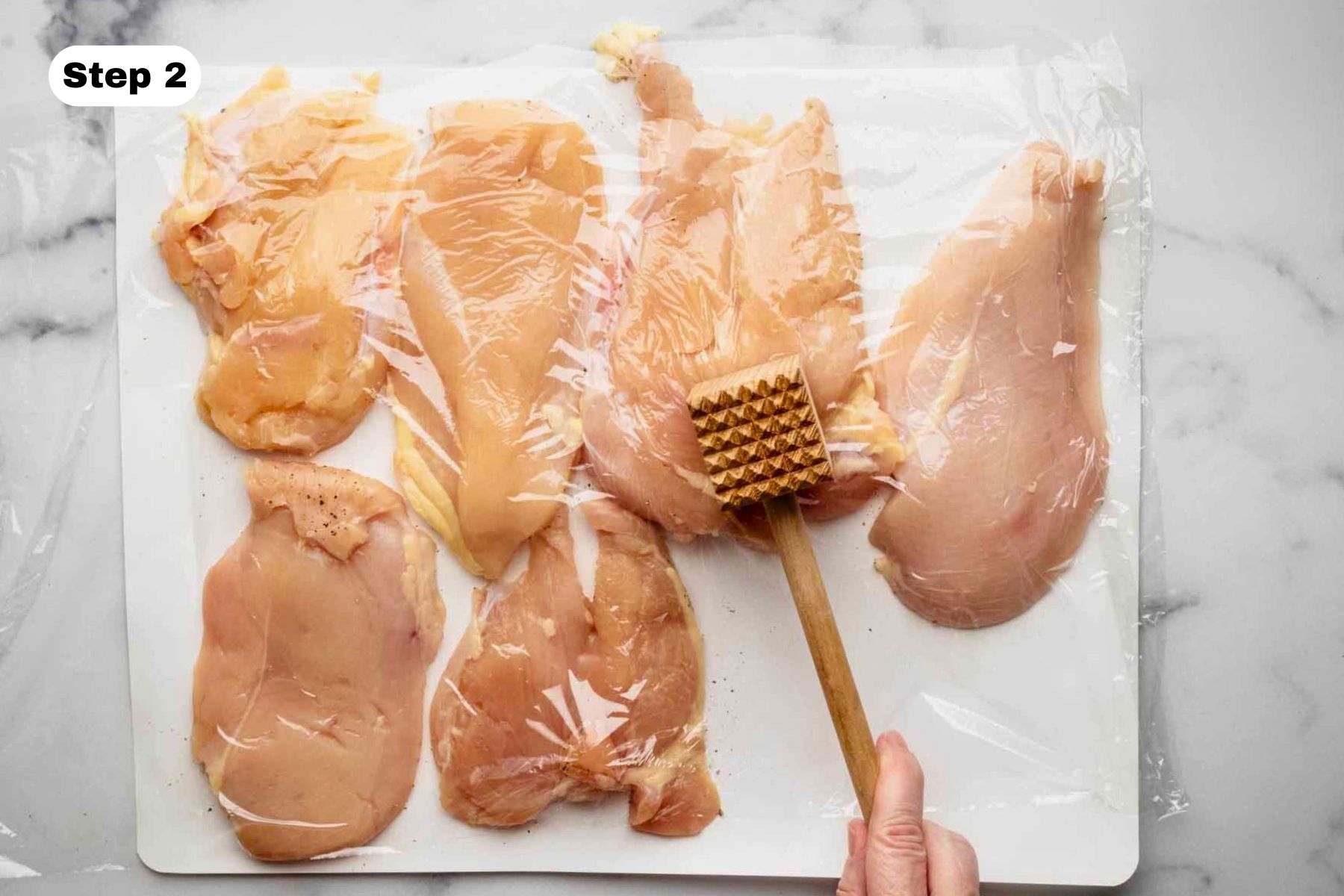
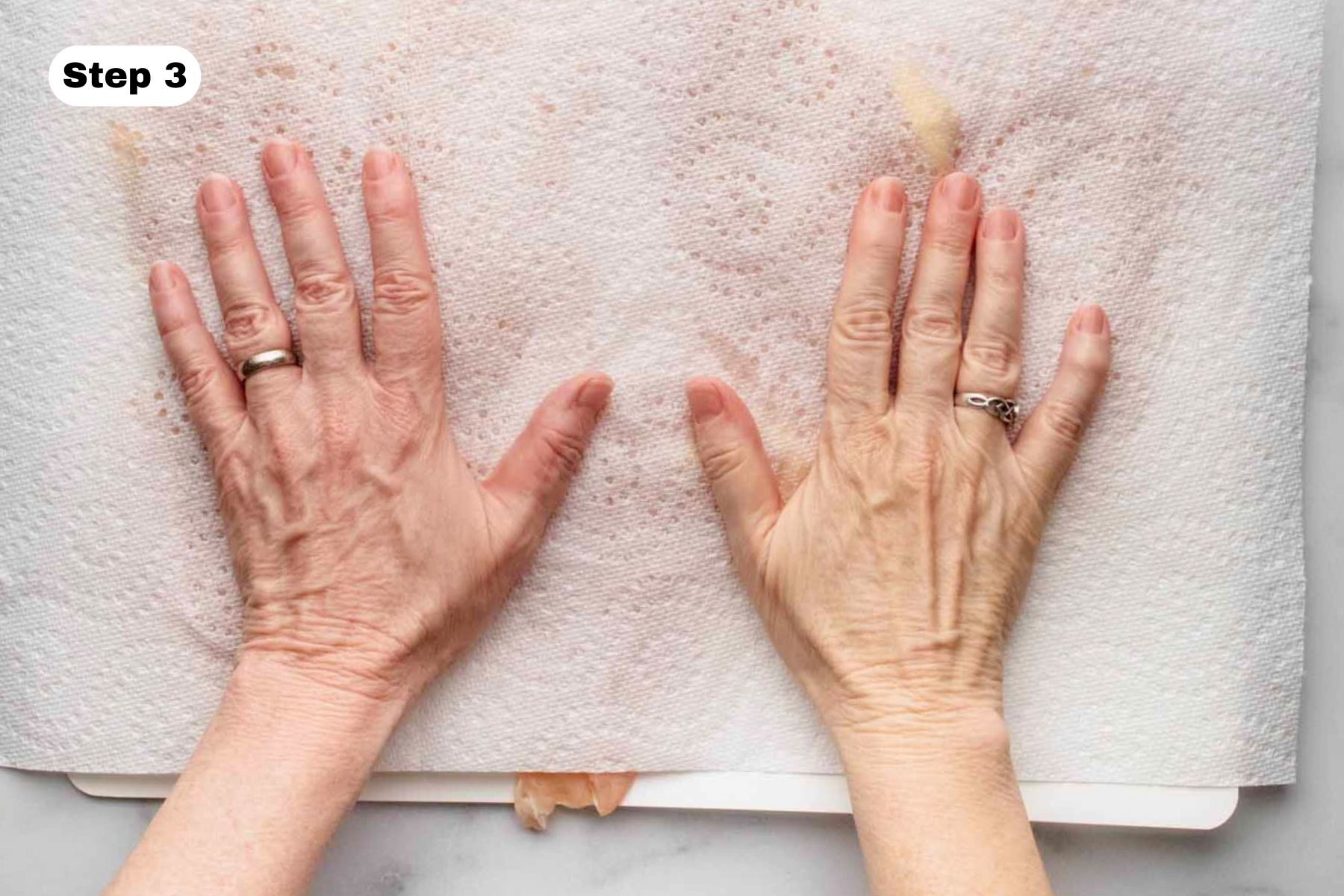


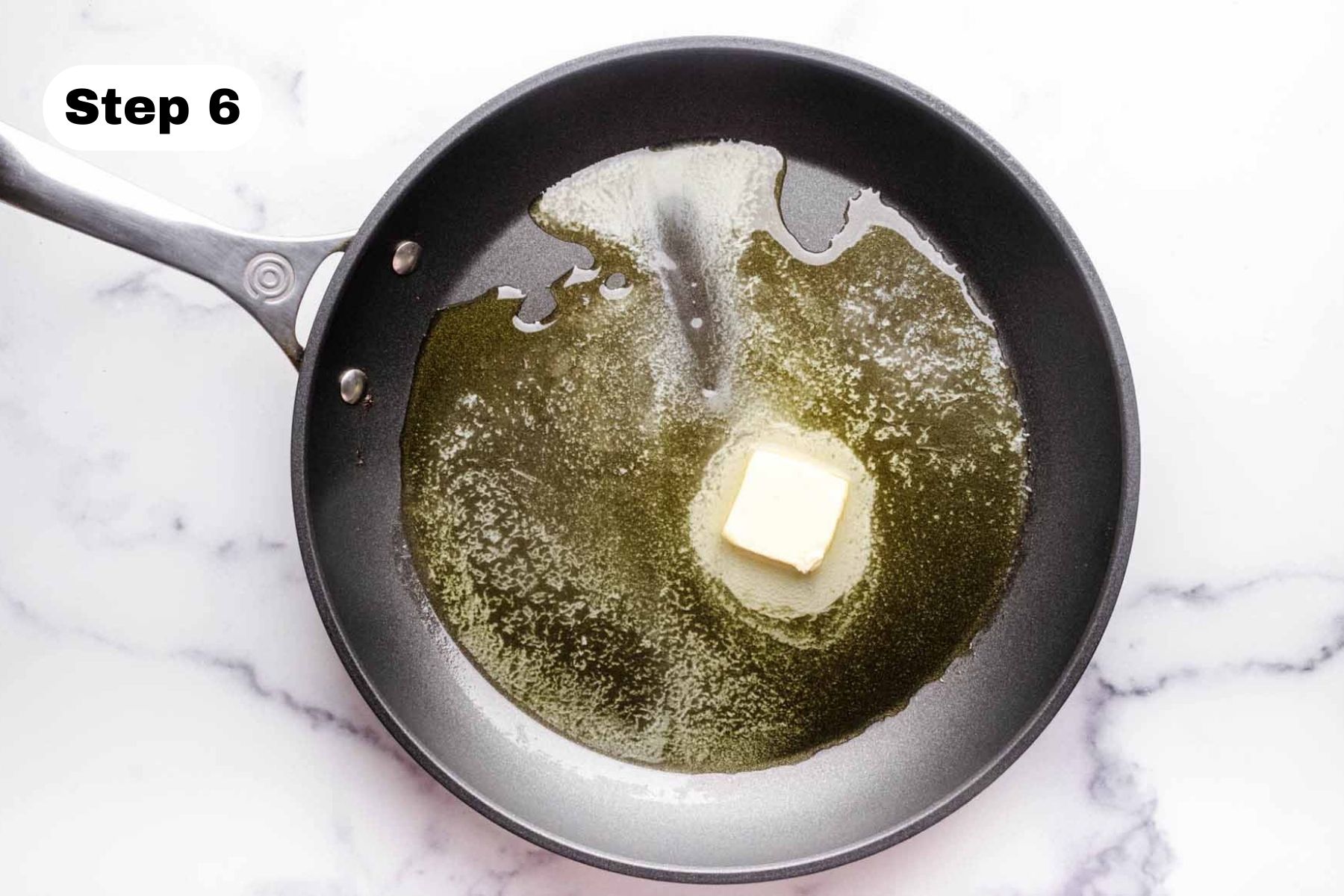
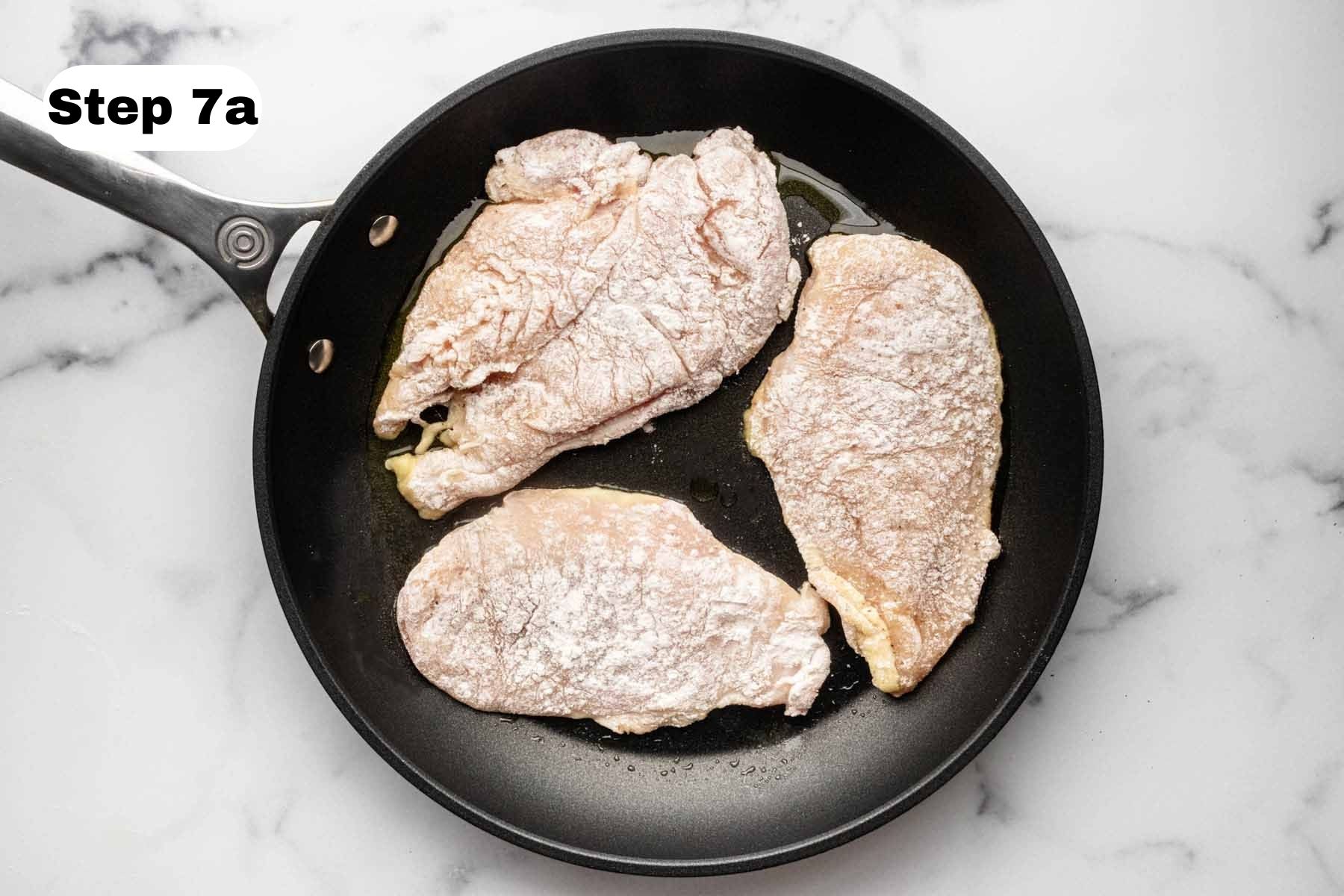
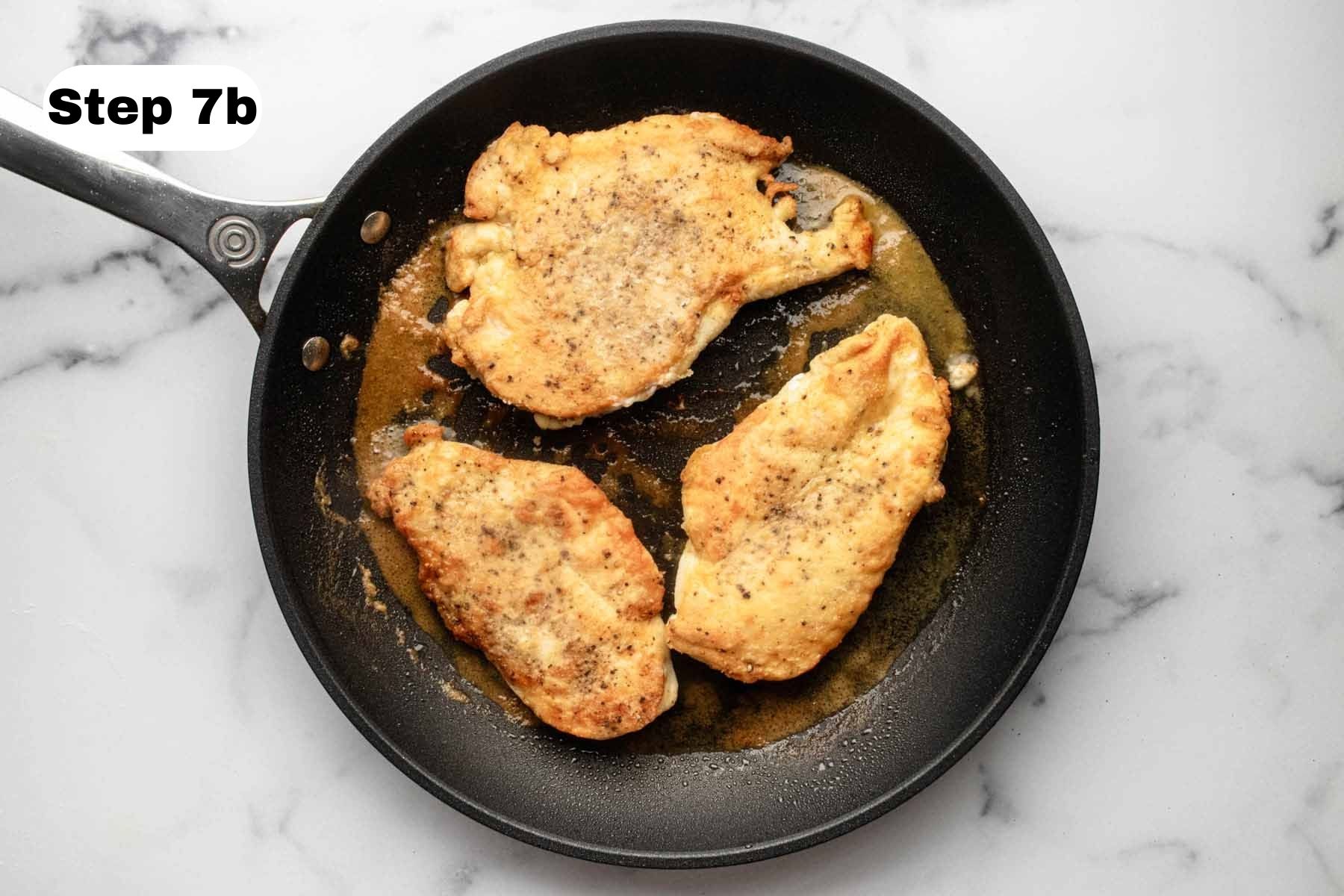
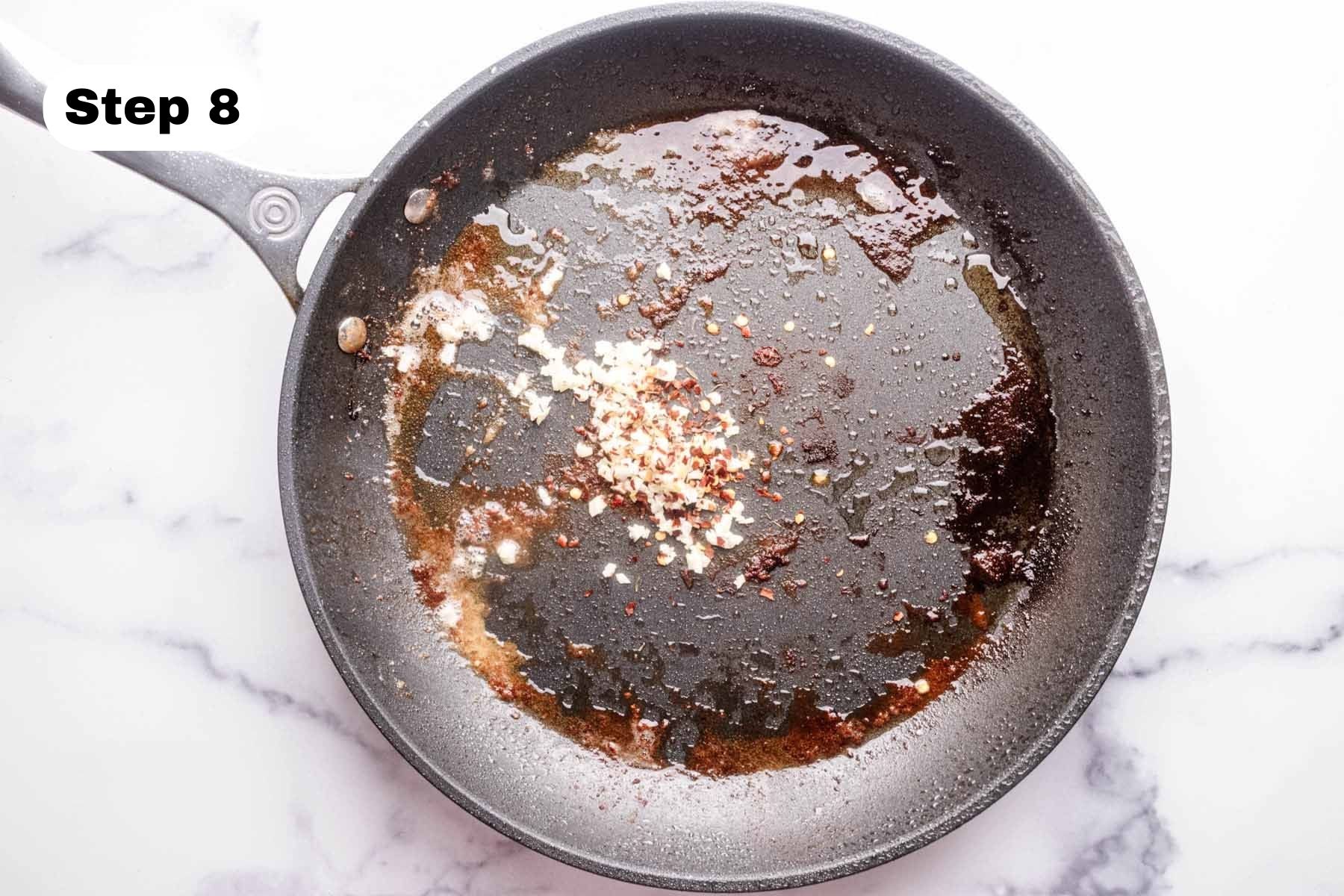
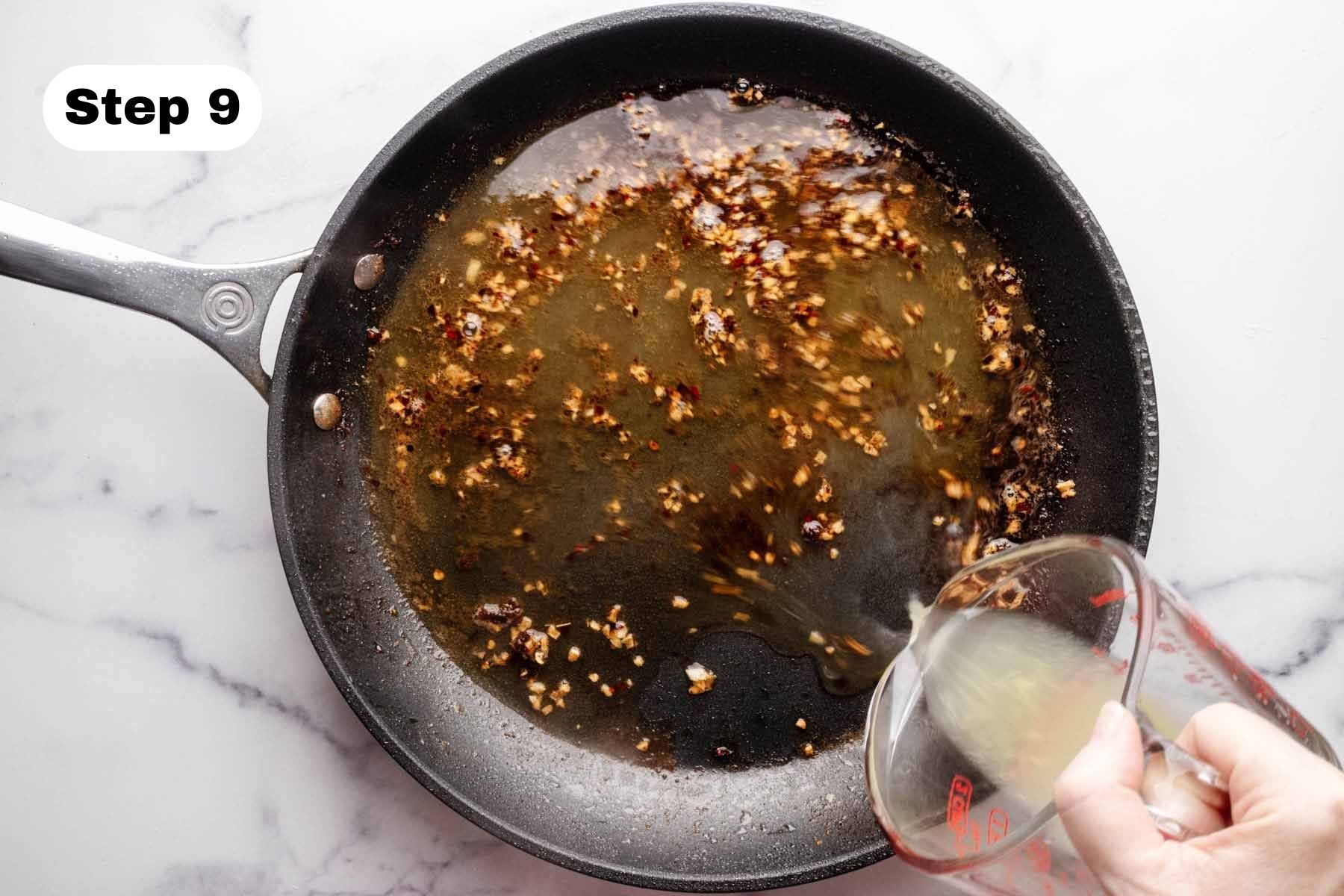

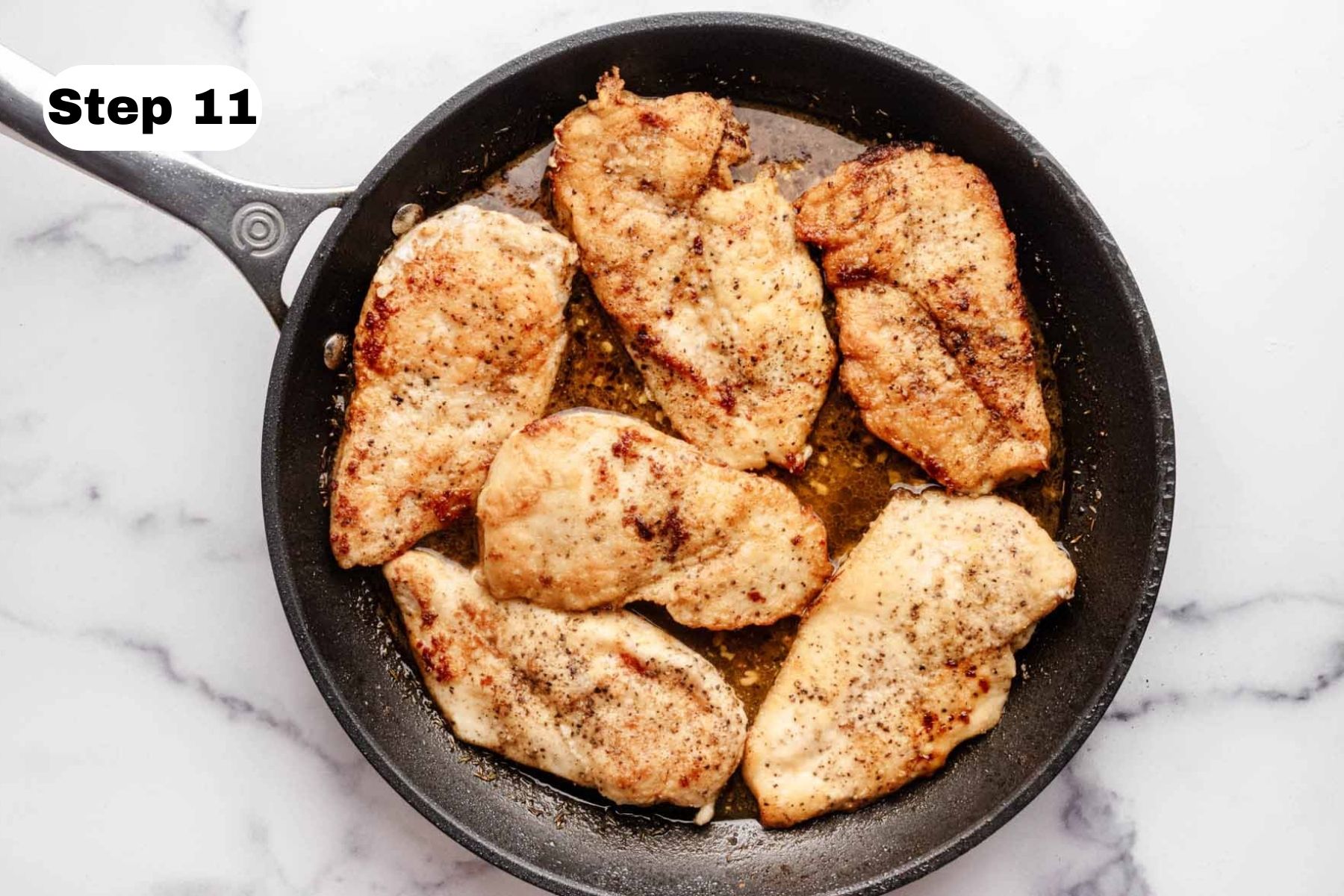
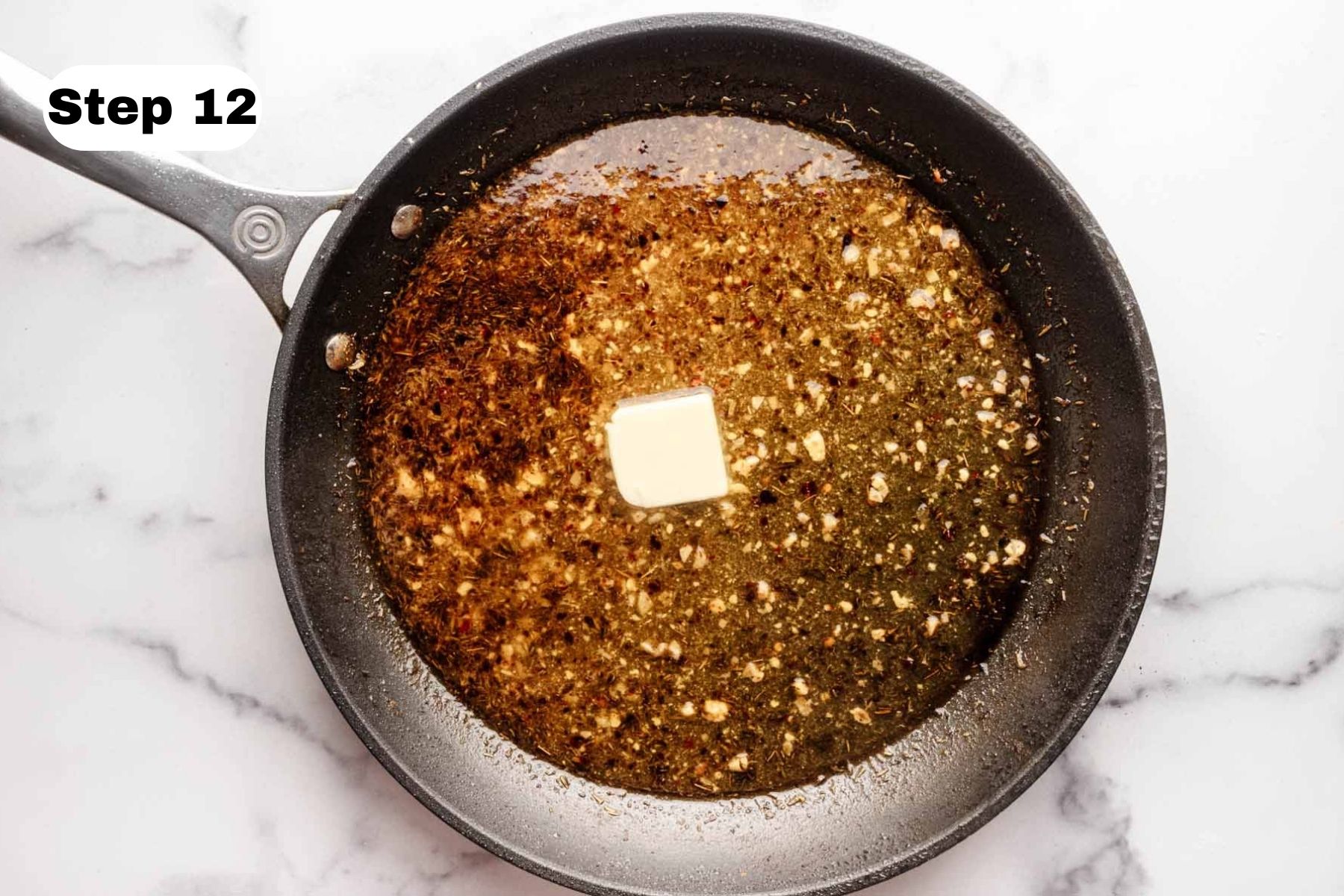
Substitution Suggestions
- Chicken. You can use chicken thighs, chicken tenders, or even boneless chicken drumsticks instead of chicken breasts. Keep in mind that cooking times may vary with different cuts.
- Flour. If you're looking for a gluten-free option, you can substitute all-purpose flour with gluten-free flour, almond flour, or cornstarch for dredging the chicken.
- Red pepper flakes. Adjust the quantity of red pepper flakes based on your spice preference. You can also use hot sauce or omit them if you prefer a milder dish.
- Butter. To make the dish dairy-free, replace butter with a dairy-free butter alternative or olive oil.
- Olive oil. If you prefer, you can use other oils like grapeseed oil, vegetable oil, or canola oil instead of olive oil.
- Lemon juice. Freshly squeezed lemon juice is ideal for the freshest flavor, but you can use bottled lemon juice in a pinch.
- Chicken broth. You can substitute chicken broth with vegetable broth or even water if you need a broth alternative. Bear in mind that you will lose some of the flavor if you opt for water.
- White wine. If you prefer not to use wine, you can replace it with additional chicken broth or use non-alcoholic white wine.
- Dijon mustard: You can swap Dijon mustard with whole-grain mustard or yellow mustard, though it will slightly alter the flavor.
- Honey. Maple syrup or agave nectar can be used instead of honey for sweetness in the sauce.
- Dried thyme. Fresh thyme leaves can be used as a substitute for dried thyme. Use about three times the amount of fresh thyme compared to dried.
- Fresh parsley. Fresh cilantro or chives can be used as a substitute for fresh parsley to garnish the dish.

Variations
Here are a few suggestions for variations that you may want to try to create a new dish based on this one. Feel free to mix and match these variations or create your own by incorporating your favorite ingredients and flavors to customize your chicken limone to your taste preferences.
- Caprese style. After cooking the chicken, top each breast with sliced fresh mozzarella cheese and cherry tomatoes. Broil for a few minutes until the cheese melts and the tomatoes blister. Garnish with fresh basil leaves before serving.
- Creamy. Add a touch of heavy cream or half-and-half to the lemon sauce for a creamier texture and flavor.
- Mushroom and Spinach. Sauté sliced mushrooms and baby spinach in the skillet after removing the chicken. Add them back to the skillet when you return the chicken to the sauce for extra depth and a veggie boost.
- Herb-infused. Add fresh herbs like rosemary, tarragon, or oregano to the sauce for a fragrant twist. Garnish with additional fresh herbs.
- Citrus fusion. Mix up the citrus flavors by using a combination of lemon, lime, and orange juices for a unique and zesty twist.
Storage
Refrigerating leftovers:
- Allow the leftover chicken to cool to room temperature. Do not leave it out for more than 2 hours.
- Transfer the chicken and sauce to an airtight container. You can store them together or separately, depending on your preference.
- Place the container in the refrigerator.
- Leftovers can be safely refrigerated for up to 3-4 days.
Reheating:
- To reheat, you can use the microwave for individual servings or reheat on the stovetop for larger portions.
- If using the microwave, cover the container with a microwave-safe lid or microwave-safe plastic wrap, leaving a small vent for steam to escape. Heat in 30-second intervals, checking and stirring until heated through.
- If using the stovetop, place the chicken and sauce in a skillet over low to medium heat. Gently reheat, stirring occasionally, until warmed to your liking.
Freezing leftovers:
- If you want to freeze leftovers, it's best to freeze the sauce and chicken separately for better texture.
- Allow the chicken and sauce to cool completely.
- Place the chicken in an airtight freezer-safe container or wrap it tightly in plastic wrap, then place it in a resealable freezer bag.
- Pour the sauce into a freezer-safe container or a freezer-safe zip-top bag. Be sure to remove as much air as possible to prevent freezer burn.
- Label the containers or bags with the date for reference.
- Leftovers can be frozen for up to 2-3 months.
Thawing and reheating:
- To thaw, place the frozen chicken and sauce in the refrigerator for several hours or overnight.
- Once thawed, follow the reheating instructions mentioned above, either using the microwave for individual servings or the stovetop for larger portions.
Note: Freezing may slightly change the texture of the sauce, so it's recommended for convenience but may not be as ideal as freshly made Chicken Limone.
Tips for Success
With the following tips in mind, you'll be well-prepared to create a delicious and memorable dish!
- Use thin chicken breasts: Creating chicken breast cutlets with an even thickness of about ¼ to ½ inch ensures they cook evenly and stay tender.
- Use an instant read thermometer. Use an instant read theremometer to make sure that the chicken cutlets are fully cooked. To check for doneness, insert the thermometer into the thickest part of the cutlet. When the internal temperature reads 165 F (74 C) the chicken is done.
- Season well. Season the chicken cutlets generously with salt and pepper on both sides before dredging in flour. This step adds flavor to the chicken.
- Shake off excess flour. After dredging the chicken in flour, shake off any excess. You want a thin, even coating, not a thick, gummy one.
- Hot skillet. Make sure your skillet is hot before adding the chicken. This helps achieve a nice sear and prevents the chicken from sticking.
- Don't overcrowd the pan. Cook the chicken in batches if needed. Overcrowding the pan can cause the chicken to steam instead of achieving a golden-brown crust.
- Fresh lemon juice. Whenever possible, use freshly squeezed lemon juice for the brightest and freshest flavor. It makes a noticeable difference.
- Adjust spices. Control the level of heat by adjusting the amount of red pepper flakes. Start with a pinch and add more if you prefer it spicier.
- Simmer the sauce. Allow the sauce to simmer for a few minutes after adding the lemon juice and other liquid ingredients. This helps to thicken and combine the flavors.
- Taste and adjust. Taste the sauce before adding the chicken back to the skillet. Adjust the seasoning with salt, pepper, lemon juice, or honey to achieve the perfect balance of flavors.
- Be patient. When returning the chicken to the skillet, let it simmer for an additional minute or two to absorb the flavors of the sauce fully.
- Butter at the end. Stir in the remaining butter off the heat. This helps create a glossy and rich sauce without breaking the butter.
- Cook with confidence. This recipe is versatile, so don't be afraid to experiment with it to suit your taste preferences and mix things up!
FAQ
Yes, you can use chicken thighs if you prefer. Just be mindful of the cooking time, as thighs may take a bit longer to cook than chicken breasts. Adjust cooking time accordingly.
Place the chicken breasts between two sheets of plastic wrap or parchment paper and use a meat mallet or rolling pin to gently pound them to an even thickness. Start from the center and work outward.
Yes. If you prefer not to use wine, you can replace it with an equal amount of chicken broth or use non-alcoholic white wine for a similar flavor.
Yes, you can prepare the sauce ahead of time and refrigerate it. Reheat the sauce gently on the stovetop, then add the chicken to heat through before serving.
To make a creamier sauce, you can add a splash of heavy cream or half-and-half when preparing the sauce. Just whisk it in after adding the lemon juice.
Pairing
These are my favorite dishes to serve with Chicken Limone:
Related Recipes
More quick and easy weeknight chicken dinner recipes!
Recipe
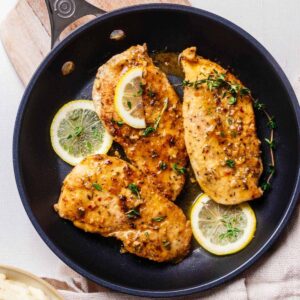
Chicken Limone
Ingredients
- 3 boneless, skinless chicken breasts About ½ pound each. See Note 1.
- Salt and freshly ground black pepper To taste.
- ½ cup all-purpose flour For dredging. Note 2.
- 3 tablespoons unsalted butter divided
- 2 tablespoons olive oil
- 2 teaspoons garlic minced
- ¼ teaspoon red pepper flakes Adjust to your spice preference or omit.
- ¼ cup fresh lemon juice About 2 medium lemons
- ½ cup chicken broth
- ¼ cup salted white cooking wine Note 3.
- 1 teaspoon Dijon mustard
- 1 teaspoon honey Note 4.
- ½ teaspoon dried thyme
- 2 tablespoons fresh thyme chopped
- Lemon slices for garnish (optional)
Instructions
- Carefully cut the breasts in half lengthwise to make cutlets.3 boneless, skinless chicken breasts
- If they do not have an even thickness, cover them with plastic wrap and pound them to an even thickness with a meat tenderizer.
- Dry the cutlets with a paper towel.
- Season the chicken on both sides with salt and pepper.Salt and freshly ground black pepper
- Add the flour to a medium shallow bowl and dredge the chicken in the flour, shaking off any excess.½ cup all-purpose flour
- In a large skillet, melt 2 tablespoons of butter with the olive oil over medium-high heat.3 tablespoons unsalted butter, 2 tablespoons olive oil
- Once the butter is foamy, add the chicken breasts to the skillet. Cook for about 3-4 minutes per side or until they are nicely browned and cooked through. Remove the chicken from the skillet and set it aside on a plate. Note 5.
- In the same skillet, add the minced garlic and red pepper flakes. Cook for a minute until the garlic becomes fragrant.2 teaspoons garlic, ¼ teaspoon red pepper flakes
- Pour in the fresh lemon juice, chicken broth, and dry white wine. Scrape any browned bits from the bottom of the pan and let the sauce simmer for a few minutes (about 3 minutes) until it slightly thickens.¼ cup fresh lemon juice, ½ cup chicken broth, ¼ cup salted white cooking wine
- Stir in the Dijon mustard, honey, and dried thyme. Adjust seasoning with salt and pepper if needed.1 teaspoon Dijon mustard, 1 teaspoon honey, ½ teaspoon dried thyme
- Lower the heat and return the chicken to the skillet, coating it with the lemon sauce. Cook for an additional minute or two to heat the chicken thoroughly and let it absorb the flavors. Remove the chicken to a serving plate.
- Turn off the heat and stir in the remaining 1 tablespoon of butter until it's fully melted and incorporated into the sauce. Pour the sauce over the chicken.
- Garnish the chicken with chopped fresh thyme and lemon slices (if desired) for an extra pop of color and freshness.2 tablespoons fresh thyme, Lemon slices
Notes
- Cut the breasts in half lengthwise to make six chicken cutlets. Then pound them to an even thickness using a meat tenderizer. Thin cutlets will cook faster and more evenly than full size chicken breasts.
- The flour creates a light coating over the chicken which is what gives it a golden brown crust. If you have a gluten intolerance, you can substitute with gluten-free flour, almond flour, or cornstarch.
- I used salted white cooking wine, which is something I always have on hand in my pantry. Since cooking wine already contains salt, I didn't add as much to this recipe. You can use any dry white wine like Sauvignon Blanc, Pinot Grigio, or Chardonnay. Because they do not contain salt, you may need to adjust the amount of salt you add to this recipe.
- Honey adds a nice sweetness that balances out the acidity of the lemon juice. You can substitute maple syrup or agave nectar or omit the honey altogether.
- Don't overcook the chicken. Smaller cutlets will cook faster. Use an instant read thermometer to check for doneness. To check for doneness, insert the thermometer into the thickest part of the cutlet. When the internal temperature reads 165 F (74 C) the chicken is done.


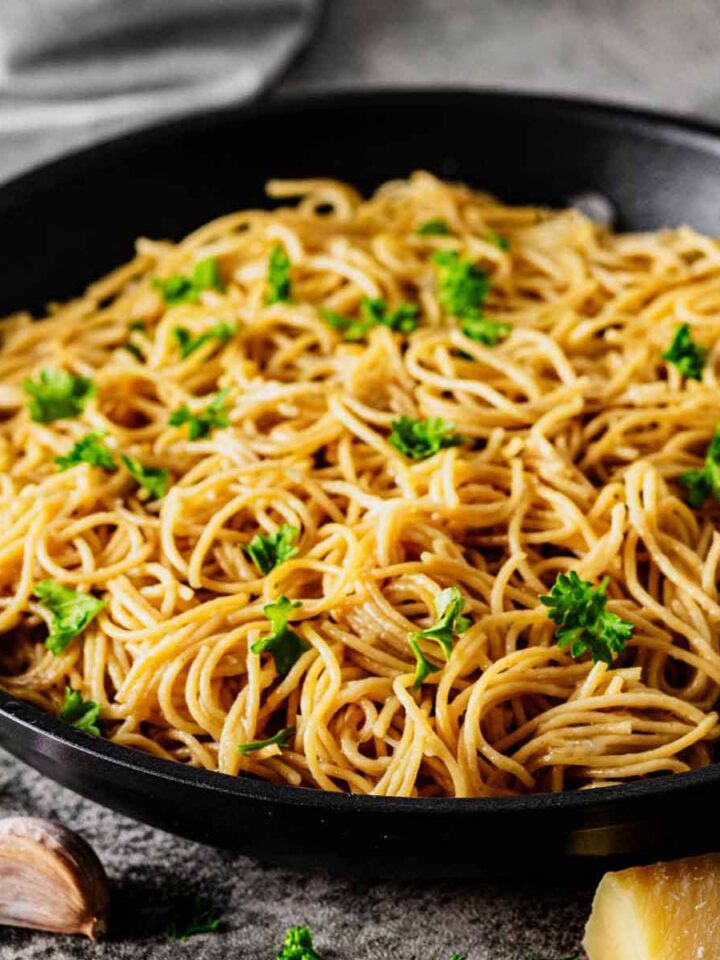
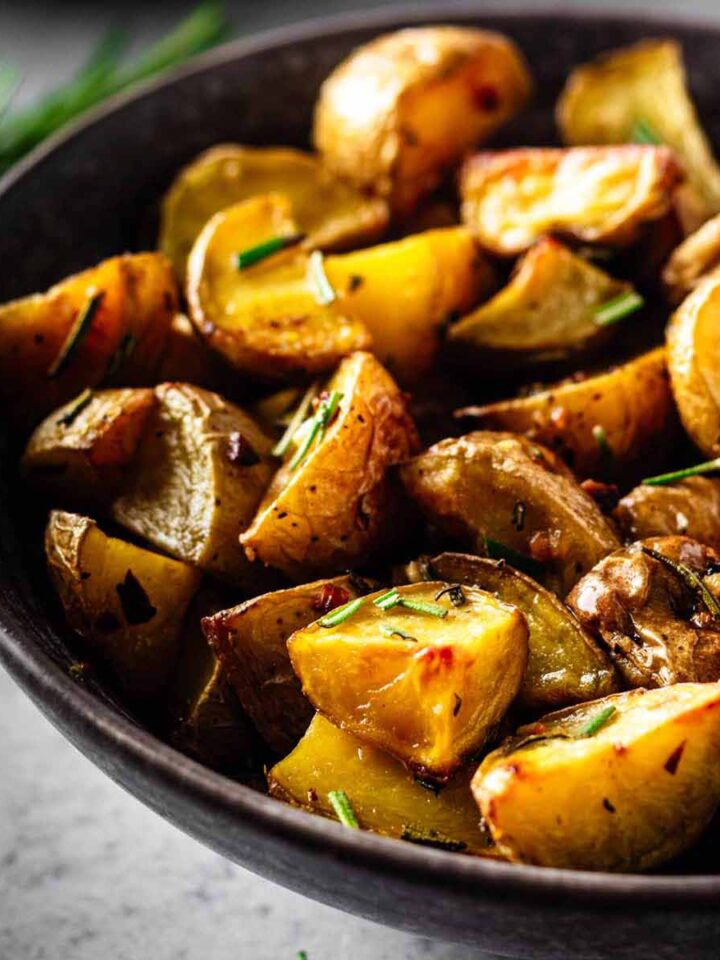

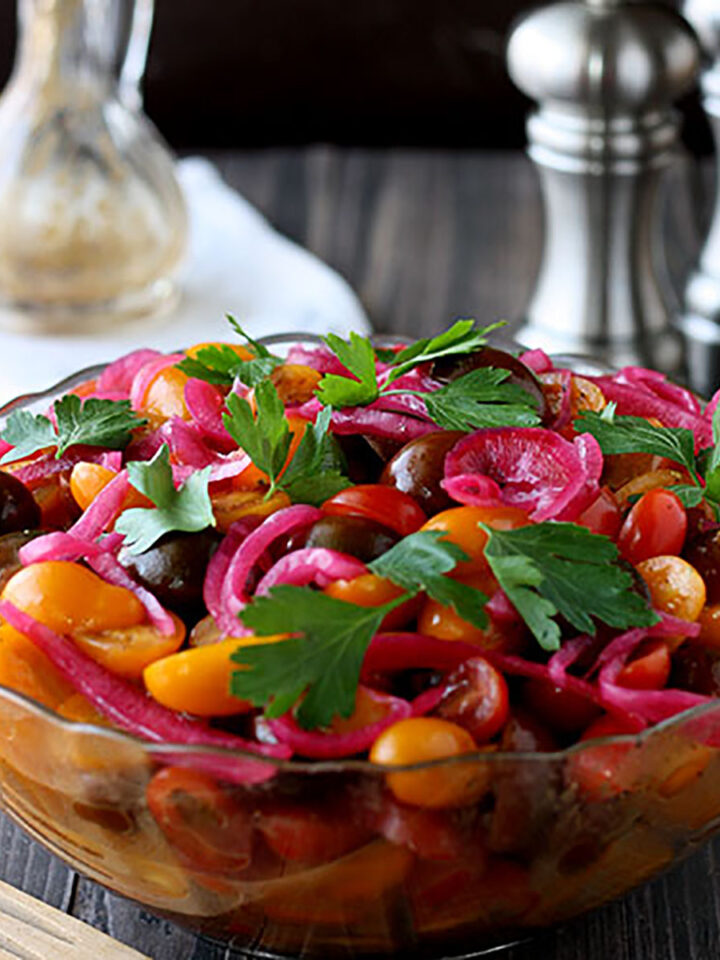
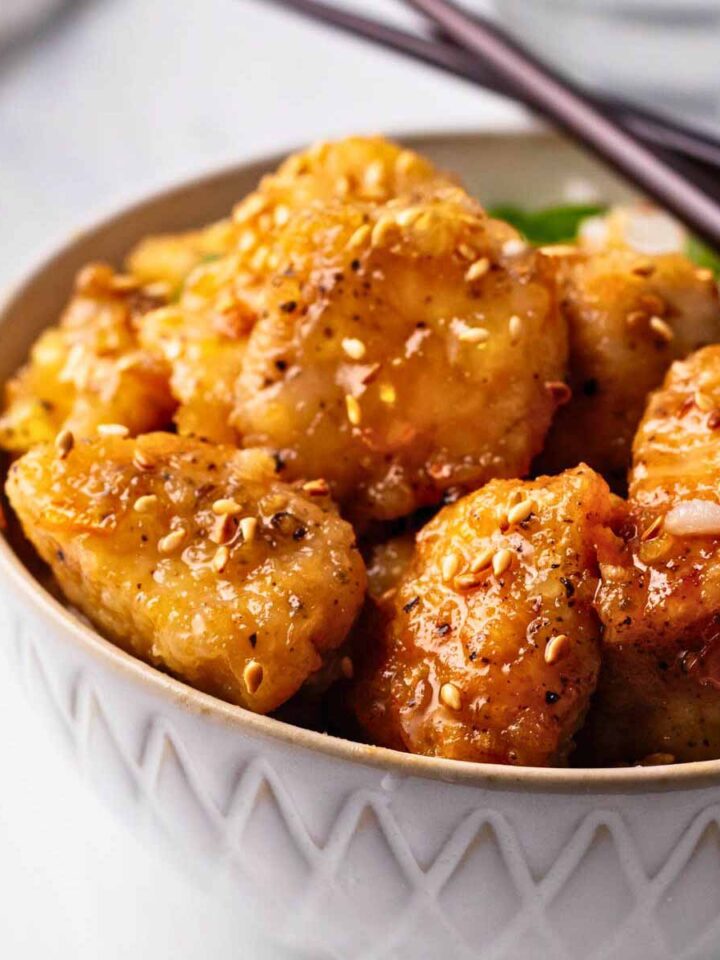
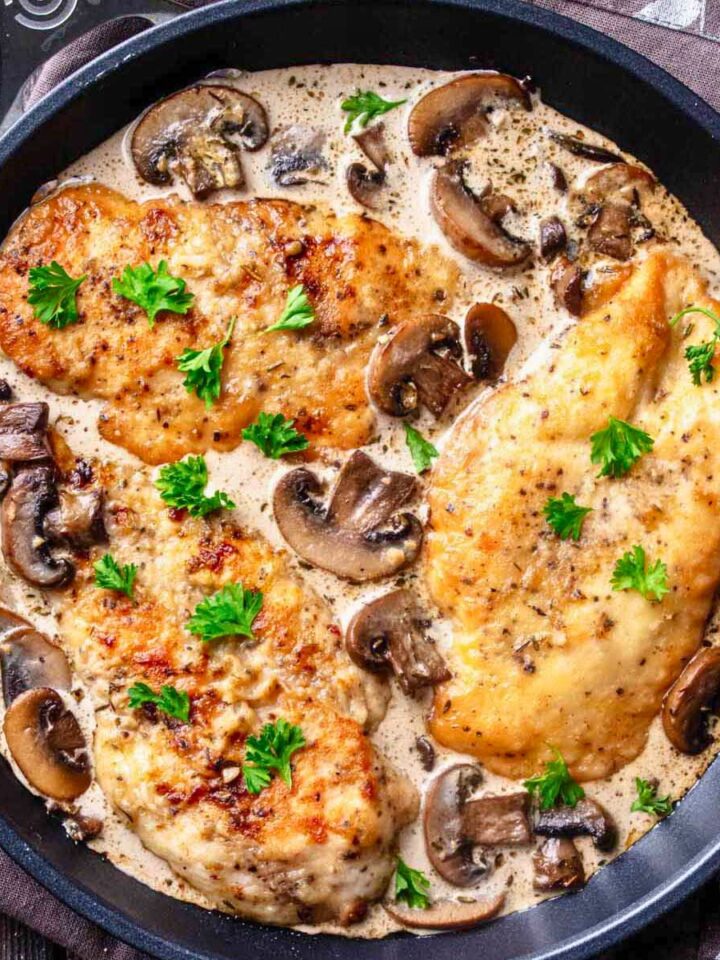
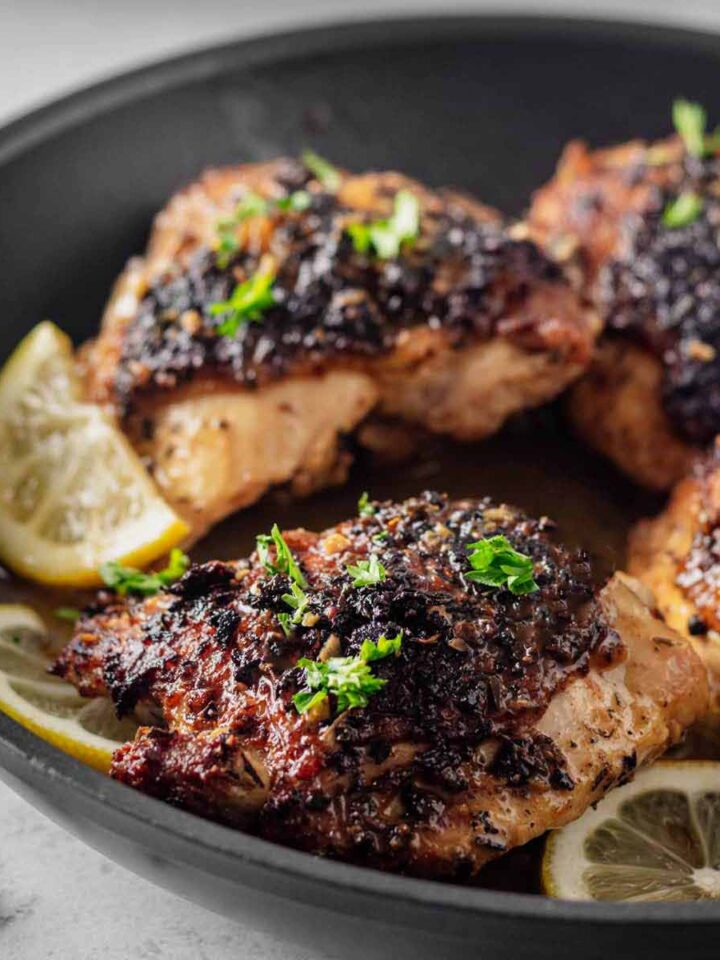

Preston says
Absolutely phenomenal tasting chicken recipe! The lemon flavor makes this one special. Super juicy.
Thanks for sharing the recipe.
A new favorite around here 😊
Sandra says
Thanks for letting us know that you enjoyed this recipe! I'm so glad.